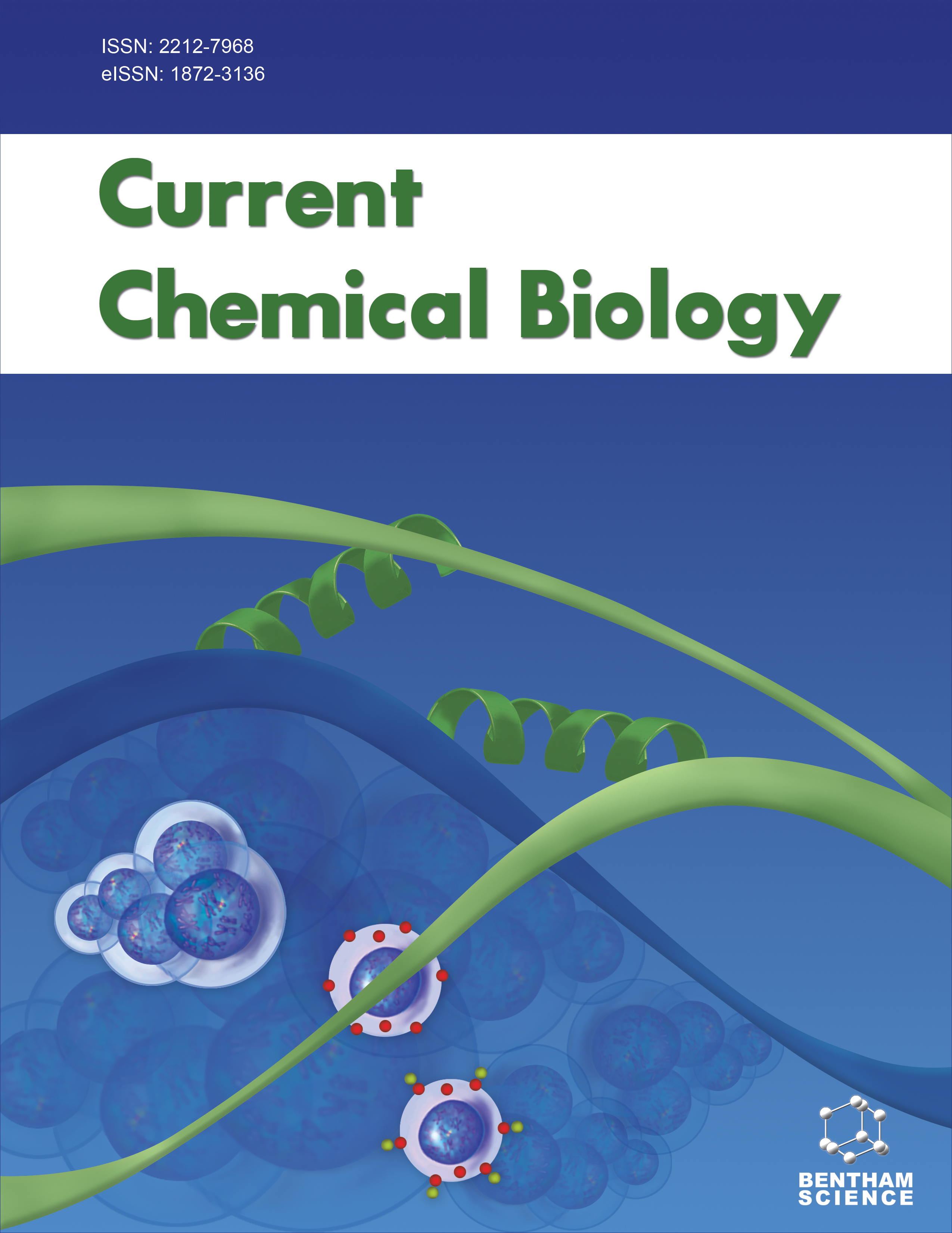- Home
- A-Z Publications
- Current Chemical Biology
- Previous Issues
- Volume 5, Issue 2, 2011
Current Chemical Biology - Volume 5, Issue 2, 2011
Volume 5, Issue 2, 2011
-
-
Editorial [Hot Topic: RNA Granules in Health and Disease (Guest Editor: Dra. Graciela L. Boccaccio)]
More LessPost-transcriptional control in the cytoplasm is an important arm of gene expression. Regulation of messenger RNAs (mRNAs) largely occurs in specialized structures collectively termed RNA granules. These large ribonucleoproteins are microscopically visible, although hard to purify biochemically, and are believed to serve as the functional units for mRNA transport, storage, repression and decay. It was during the stu Read More
-
-
-
Common Themes in RNA Subcellular Transport, Stress Granule Formation and Abnormal Protein Aggregation
More LessAuthors: Lorena B. Bensenor, Maria Soledad Vazquez and Graciela L. BoccaccioControl of protein synthesis and quality are critical steps to support eukaryotic cells' maintenance and survival. Two very distinctive mechanisms emerge as key checkpoints of protein synthesis regulation. The first one is the delivery of mRNA molecules, packed into ribonucleoprotein (mRNP) granules, to specific subcellular regions in order to restrict protein synthesis to distinct cytoplasmic domains. In the presence of cellular Read More
-
-
-
RNA Metabolism in Neurodegenerative Disease
More LessAuthors: Kathryn Volkening and Michael J. StrongRNA metabolism is a vital process through which RNA is produced, transported, regulated, stored, and translated or degraded. Recently, the discoveries of mutations in key RNA binding proteins involved in several human neuronal based diseases have firmly placed the process of RNA metabolism as central to disease etiology. This review first recaps the process of RNA metabolism in the mammalian neuron and describ Read More
-
-
-
The Axonal Transcriptome: RNA Localization and Function
More LessNeurons are highly polarized cells, often with very long processes, which can comprise up to 95% of the cytoplasm. This raises the issue of transporting and turnover of proteins transport. In addition to fast axonal transport, axonal translation has been proposed to be responsible for producing at least some axonal proteins. In multiple experimental models, local synthesis of several proteins has been demonstrated in Read More
-
-
-
RNA Granules Living a Post-Transcriptional Life: the Trypanosomes' Case
More LessTrypanosomes are protozoan parasites responsible for recalcitrant infectious diseases such as Sleeping sickness and Chagas disease in Africa and America, respectively. Their complex life-cycles are accompanied by alternation of forms specific of the insect vectors and vertebrate hosts, each with different metabolic and structural requirements. Unlike most other eukaryotes, these single-cell microorganisms seem to control th Read More
-
-
-
Diving Into the Lipid Bilayer to Investigate the Transmembrane Organization and Conformational State Transitions of P-type Ion ATPases
More LessAlthough membrane proteins constitute more than 20% of the total proteins, the structures of only a few are known in detail. An important group of integral membrane proteins are ion-transporting ATPases of the P-type family, which share the formation of an acid-stable phosphorylated intermediate as part of their reaction cycle. There are several crystal structures of the sarcoplasmic reticulum Ca2+ pump (SERCA) reve Read More
-
-
-
Regulation of G-Protein-Coupled Receptor Signalling by the Scaffolding Proteins Spinophilin/Neurabin 2 and Neurabin 1
More LessAuthors: Denis Sarrouilhe and Thierry MetayeNeurabin 1 and neurabin 2/spinophilin were discovered in late 1990s on the basis of their F-actin-binding and protein phosphatase 1 catalytic subunit (PP1c) modulation activities. The neurabins are proteins with modular domains, such as one F-actin-, a receptor- (not found in neurabin 1) and a PP1c-binding domains, a PSD95/DLG/zo-1, three coiledcoil domains and a sterile alpha motif (not found in spinophilin) that govern Read More
-
-
-
Anionic Antimicrobial Peptides from Eukaryotic Organisms and their Mechanisms of Action
More LessAuthors: Frederick Harris, Sarah R. Dennison and David A. PhoenixAnionic antimicrobial peptides (AAMPs) are important components of the innate immune system and here, we review recent research into these peptides. As examples, we refer to two major families of AAMPs: those that adopt cysteine stabilized β-sheet structure, such as plant cyclotides, and those that are encrypted in larger proteins, such as bovine kappacins. This review shows that AAMPs use a diverse range of antimic Read More
-
Volumes & issues
Most Read This Month
Article
content/journals/ccb
Journal
10
5
false
en


